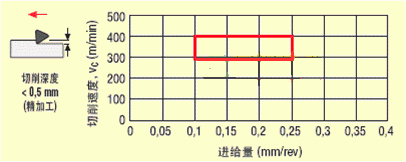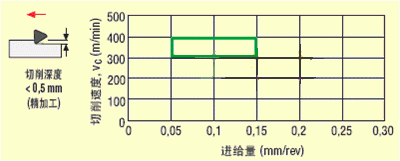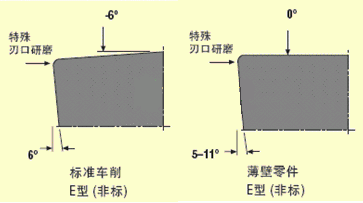The term "superalloy" describes a wide range of nickel, iron and cobalt based alloys developed specifically for applications that typically require excellent mechanical and chemical properties at elevated temperatures. About two-thirds of superalloys are used in the manufacture of power turbines and related parts for the aerospace industry. Inconel 718 is a precipitation hardened nickel-chromium alloy containing significant amounts of iron, bismuth and molybdenum, as well as small amounts of aluminum and titanium. It combines corrosion resistance, high strength with outstanding weldability, including resistance to post-weld cracking. The alloy has excellent creep rupture strength at temperatures up to 700 °C. The current effective processing of the Inconel 718 PCBN material grade is very clear. Continuous cutting for cutting depths less than 0.5 mm has proven to be very successful. Roughing with a depth of cut greater than 0.5 mm is usually not successful. Semi-finishing has proven to be very successful, and finishing usually requires a trial before being implemented, as it may have an effect on surface integrity. Standard turning Thin-walled parts When machining thin-walled parts, it may be necessary to use a geometry with a 0° rake angle. This will reduce the cutting forces generated during machining and will reduce the likelihood of flattening of thin-walled parts. Next page Zippe Mast ,Telescoping Mast For Antenna,Channel Master Telescoping Antenna Mast,100 Ft Telescoping Antenna Mast TIANHEMAST , https://www.robomasts.com
Second, the application range of PCBN processing Inconel
Recommended for the working area of ​​the Inconel 718 (30 ~ 45HRC) slot (Note: not for interrupted cutting. Use E25 cutting edge for grinding. Tool grade CBN10) 
Recommended for working areas for Inconel 718 turning 
Recommended for the working area of ​​the Inconel 718 slot 
Application of PCBN tool in Inconel 718 processing (Fig.)
I. Introduction to Inconel718 Application Third, the geometric angle and grinding of PCBN tools suitable for Inconel processing